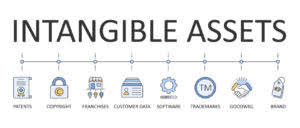Net Working Capital: Definition, Formula, Uses

Negative Working Capital is important because it can have a material impact on a company’s Cash Flow (and thus its Valuation). Said differently, each year, the dollars required to fund increasing assets are lower than the dollar value from increased funding from money lent from Customers, Inventory Suppliers, and Operating Suppliers. Now let’s look at a more tangible example of how a company benefits from extended payment terms.
- Hence, the company exhibits a negative working capital balance with a relatively limited need for short-term liquidity.
- A company in such position faces greater financial risk, as it might struggle to cover its short-term debts.
- This resilience and sustainability display a commitment to the larger goal of economic stability, which is a key aspect of CSR efforts.
- Walton’s approach to working capital management has been widely adopted by retailers and other businesses that operate on a cash basis.
- If the company’s monthly cash burn is $250,000, this represents barely a month of runway for them.
- Moreover, negative working capital that occurs because of selling goods at a lower price eventually leads to reduced profitability along with a downward trajectory in financial performance.
Banking Relationships: The Foundation of Credit Decisions
The automated cash management solution helps businesses ensure complete visibility over their cash and bank balances. Second is our automated cash forecasting solutions, which help businesses consolidate projections and also allow collaboration across multiple business functions and hierarchies. The key to avoiding negative working capital is to have robust working capital management in place. Here are a few techniques that can help businesses ensure working capital effectiveness. AltLINE partners with lenders nationwide to provide invoice factoring and accounts receivable financing to their small and medium-sized business customers. AltLINE is a direct bank lender and a division of The Southern Bank Company, a community bank originally founded in 1936.
Financial
- The following are some of the most common reasons why a business might see its current liabilities exceed current assets.
- Now that we’ve discussed the meaning behind negative working capital, we can complete a practice modeling exercise in Excel.
- For example, if a firm has a Current Ratio of 2.0, it means the firm has two times more short-term assets than short-term liabilities.
- Because these have little to do with the company’s daily operations to bring its products and services to the market.
- In essence, the manner in which a company manages its Net Working Capital can either bolster or deter its CSR initiatives.
The NWC figure shows how much cash is tied up in a company’s day-to-day operations. • Negative working capital can, however, signal a risk of not meeting short-term obligations, potentially leading to financial strain. Read on for an in-depth look at what it means negative nwc to have negative working capital, when it can happen, and whether it’s a good or bad thing for your small business.
Financing Solutions
While A/R and inventory are frequently considered to be highly liquid assets to creditors, uncollectible A/R will NOT be converted Bookkeeping for Consultants into cash. In addition, the liquidated value of inventory is specific to the situation, i.e. the collateral value can vary substantially. Net working capital, often abbreviated as “NWC”, is a financial metric used to evaluate a company’s near-term liquidity risk.
Company

In this way, it can create a chain that uses the suppliers’ money to its advantage and doesn’t have to borrow money from a bank. Any industry that makes money through trial balance cash when it sells a product/service will have money at its hand. The companies which have a higher credit period for their receivables may not be able to justify the negative working capital that is good for them. When you encounter negative working capital, first determine whether it represents operational strength or financial distress.
- Zero working capital can increase the effectiveness of a business’s investment.
- Mike is the Chairman and Co-Founder of McCracken, a professional services firm dedicated to supporting companies with their finance needs in talent, leadership development, and technology.
- This content may include information about products, features, and/or services that may only be available through SoFi’s affiliates and is intended to be educational in nature.
- While having a negative net working capital is not ideal, very high positive working capital may also not be a good idea.
- The working capital cycle is the time required by a business to liquify its current assets.
- This can be due to the subscription-based revenue model that SaaS companies typically use, which provides a predictable and recurring stream of income.
- Another crucial part of managing net working capital is the efficient handling of accounts receivable.
- In other words, a company’s ability to meet short-term financial obligations.
- Negative working capital is actually quite common in industries that experience high inventory turnover.
- Overall, while negative working capital may seem like a negative thing, it can actually be a sign of financial efficiency.
- The pressure to maintain liquidity can drive companies to optimize their inventory management practices.
- This reliance can lead to stronger relationships with suppliers, as companies may negotiate favorable terms to ensure a steady flow of goods and services.
Additionally, if a business loses its inventory due to wastage, fire, theft, , or any other reason, it reduces the value of stock on the balance sheet, resulting in negative working capital. Further, this makes it difficult for a business to meet its operating expenses and cater to customer demands. When a business’s current assets exceed more than its liabilities, it denotes they have a positive working capital.


HighRadius brings cutting-edge cash management and cash forecasting software to redefine the way businesses manage their working capital. These automated solutions from our treasury suite will help businesses view, manage, analyze, forecast, and get complete control over their working capital without any hassle. Negative working capital is generally only an advantage for companies with high inventory turnover. When companies are able to sell the inventory faster than they need to pay their suppliers, it is almost like getting a loan from the supplier. A negative working capital acquisition is when a company acquires another company with a negative working capital position. This can attract the acquiring company because it allows them to access the target company’s cash flow and working capital resources without investing additional funds.

The net working capital (NWC) formula subtracts operating current assets by operating current liabilities. In addition to financial modeling, negative working capital can also be useful in comps analysis. By comparing a company’s negative working capital to that of its peers, analysts can gain insights into the company’s financial efficiency and competitive position.
